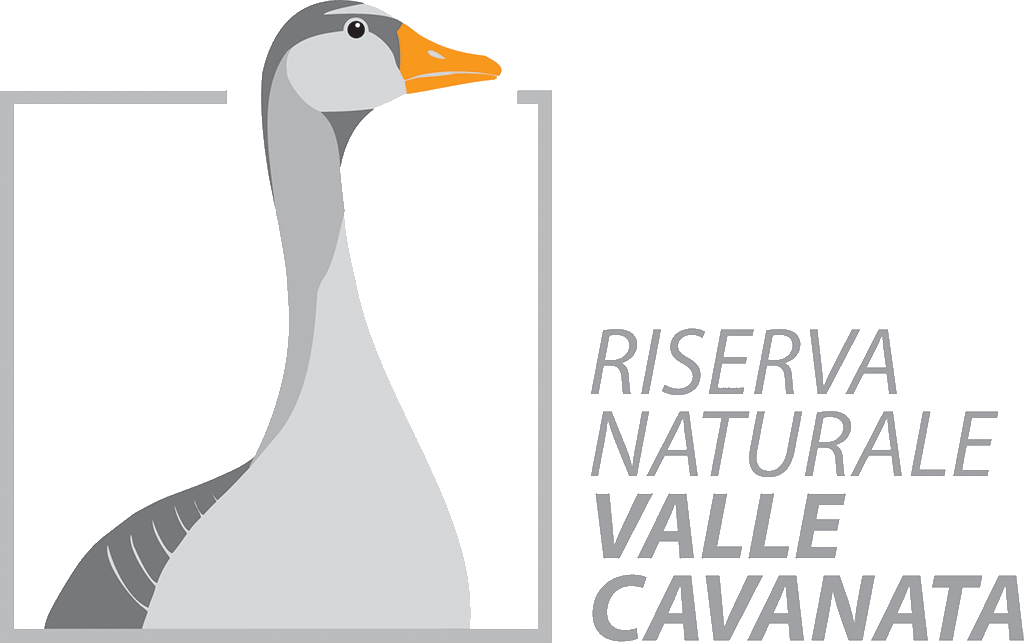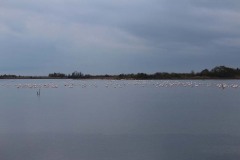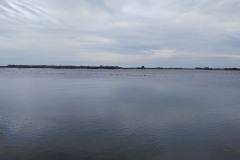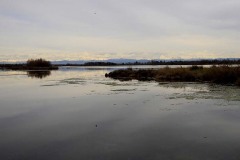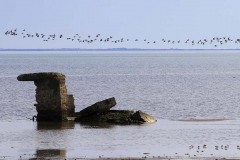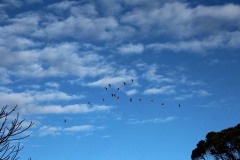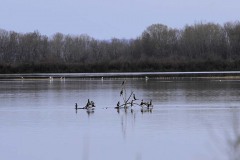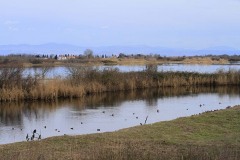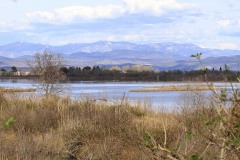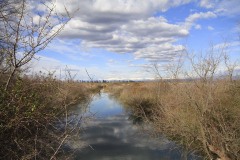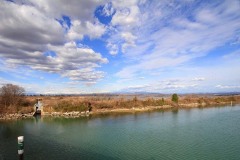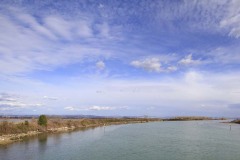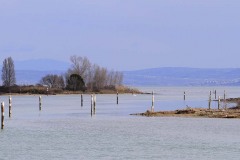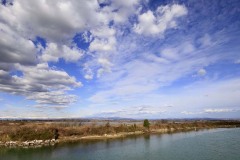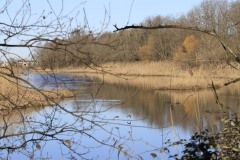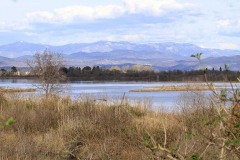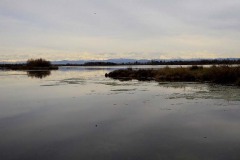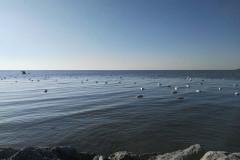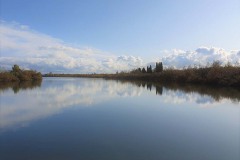
The Valle Cavanata Regional Nature Reserve was established under the Regional Law no. 42 dated 30th September 1996. In addition to the Valle Cavanata, the Reserve also includes the Canale Averto and the strip of woods that surround it. It is located in the eastern part of the Grado lagoon which was embanked and equipped with adjustable sluices in communication with the sea and transformed into a fish rearing operation that functioned until 1995. In the northern Adriatic lagoons, natural environments modified by the human, these fish rearing ponds have a particular meaning (a term deriving from the Latin vallum – embankment, or wall). These are shallow lagoon areas, with mudflats and sandbanks, embanked and hydraulically isolated from the surrounding waters, and used for fish farming. The optimal water level within the valle is maintained through adjustable locks.
Today, Valle Cavanata, with its 250 hectares, is one of the largest fishing valli in the Grado lagoon, even if it only a part of that which was created from the lagoon and surrounding marshy area from the 1920s onwards, when the major reclamation works were carried out. Valle Cavanata was completely embanked in the 1930s, becoming a fishing and hunting valle with an area about three times larger than that at present. In the same period, the area located to the east of today’s valle was reclaimed for agriculture, thus reducing the marshy areas, and the Canale Averto, an ancient branch of the Isonzo, was transformed into a spillway channel for the “della Vittoria” (“Victory”) reclamations after World War One. The reclamation works were completed in the areas north of the valley in the 1950s which drastically reduced its area to its current size. After the floods of 1965 and 1966, the sea embankment was reinforced, the Averto Canale closed to the sea, and the current beach was created.
The Cavanata Valley has been recognized as having international value under the Ramsar Convention, in particular as a habitat for waterbirds with excellent potential as a stopover and nesting site for many bird species. Over 260 bird species have been reported thus far.
The symbol of the Reserve is the Greylag Goose (Anser anser), which was reintroduced in 1984 and has been breeding regularly since 1987, the population of which now numbers around a hundred individuals.
Since 1995, all operations related to fish farming in the valle have been suspended, and a management of water levels principally aimed at favouring its birdlife has been introduced.
In 1998, the Valle Cavanata Regional Nature Reserve, together with the Banco della Mula di Muggia, was proposed as a site of community importance (SAC and SPA). These sites are covered by the Directive 92/43 EC, also known as the Habitats Directive. This requires that the member states of the Union identify areas within their countries that host the animal and plant species and habitat types listed in the annexes of the directive. Their conservation is considered a priority at European level. Sites of Community Importance are part of a European network of protected areas called Natura 2000.
